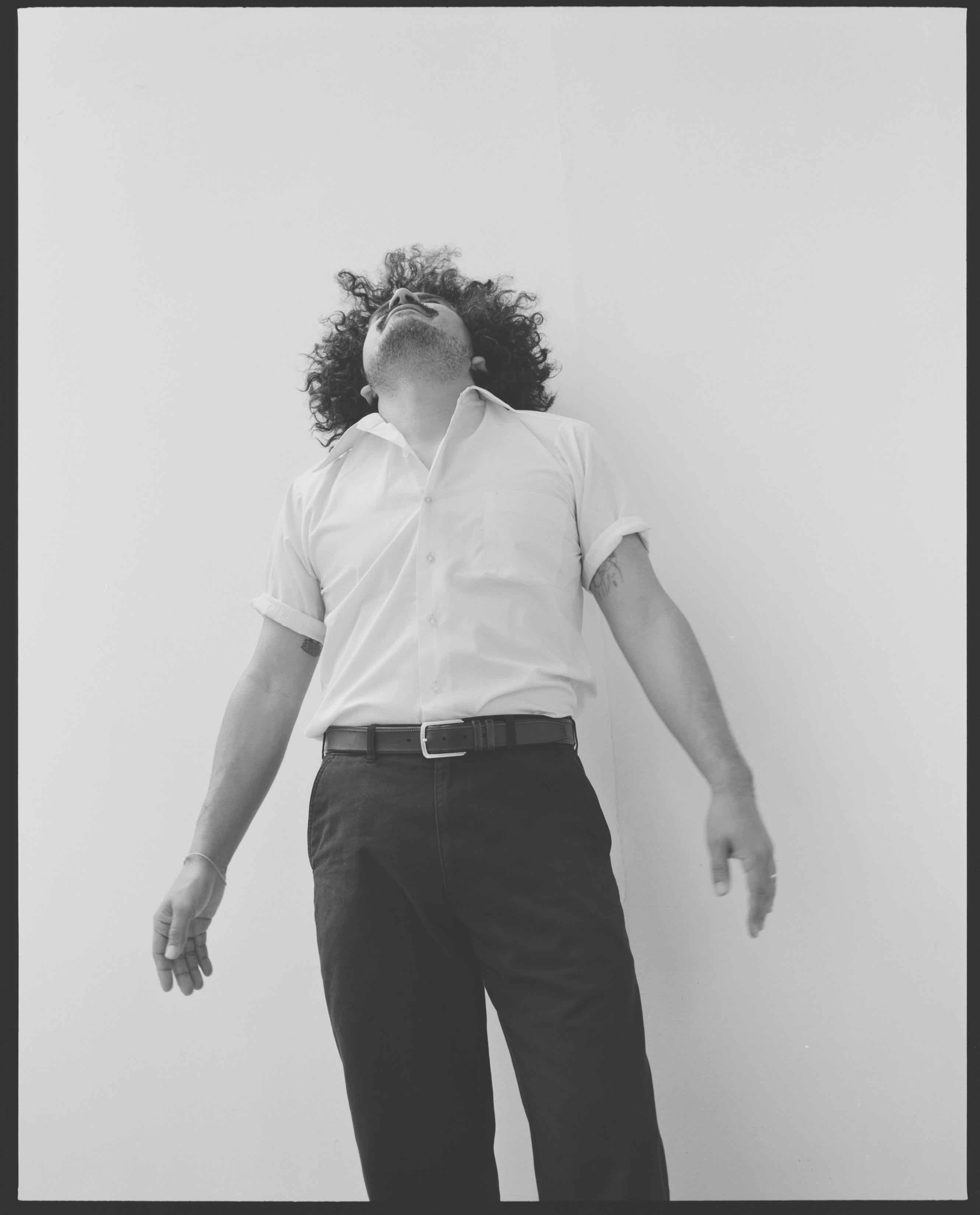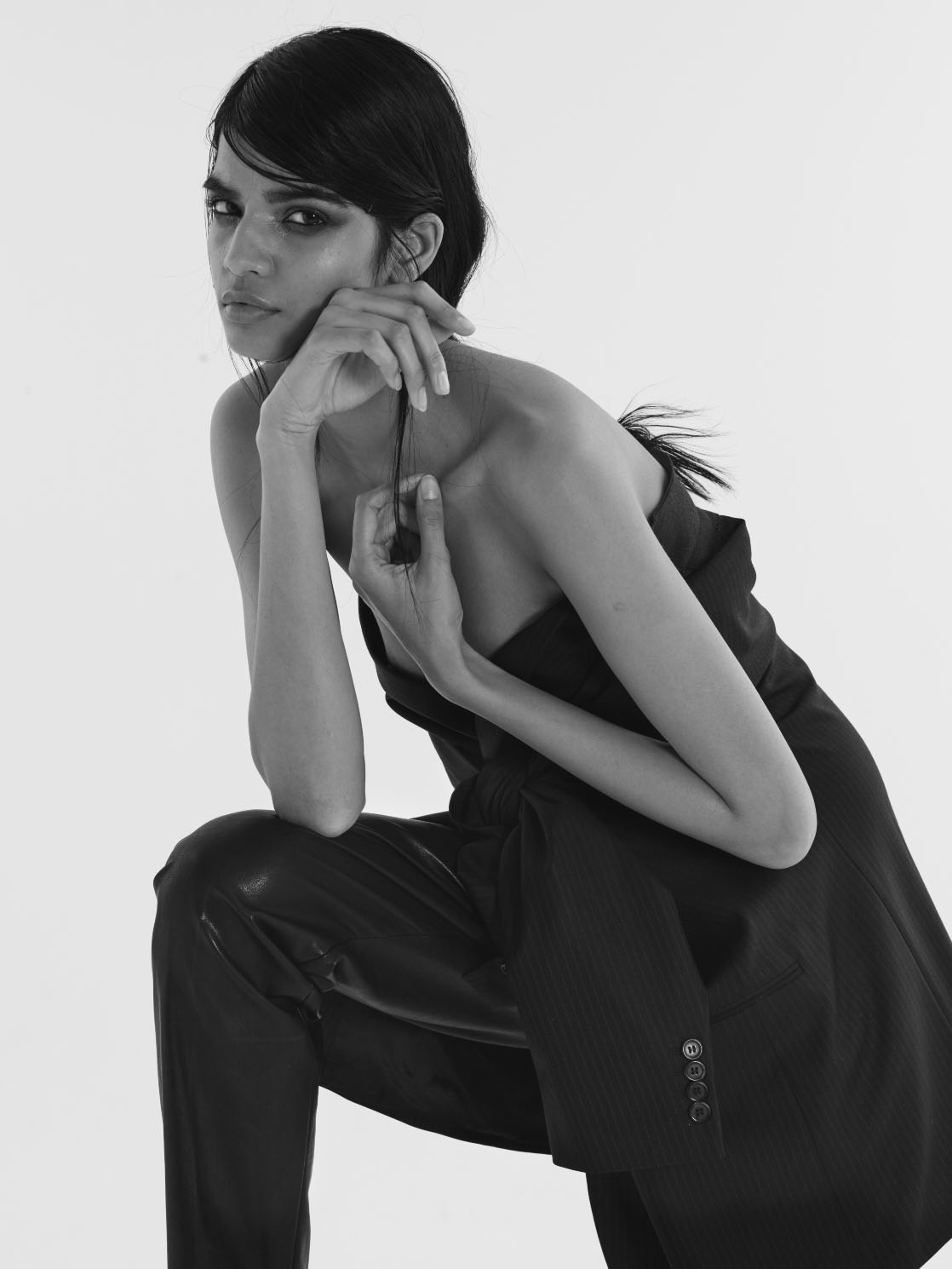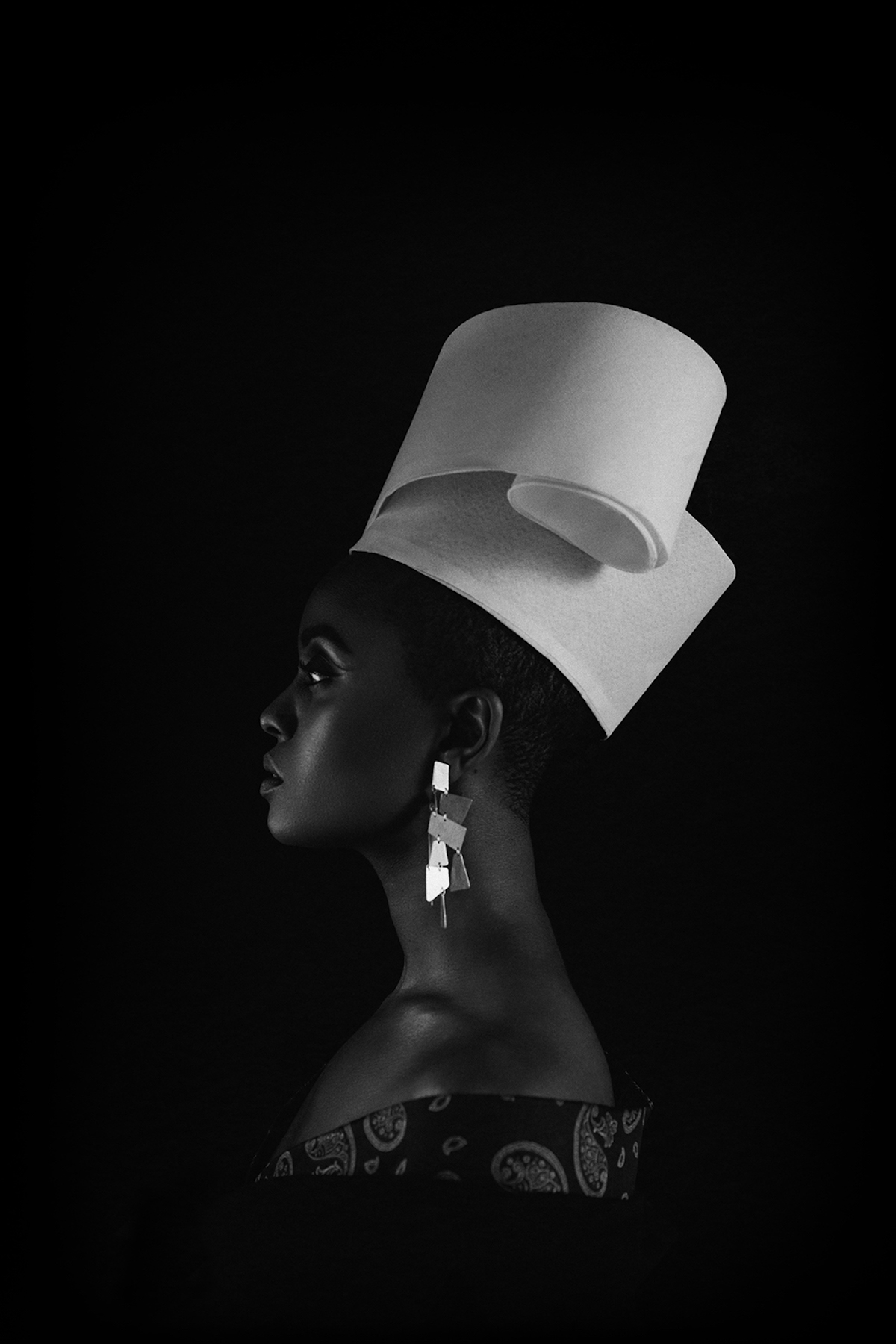While in Paris during a brief stint at the Institut Français de la Mode, Israeli designer Hed Mayner met actress Kate Moran, who insisted he meet with Samuel Drira, a designer, stylist, and the co-founder of Encens magazine. Although hesitant to meet Drira without being able to show him his work, which was back in his studio in Tel Aviv, Mayner finally agreed to a lunch that Moran set up for the two of them.
In conversation with one another, Drira and Mayner, who are now close friends as well as collaborators, discuss their dynamism as a duo, the influences behind their projects, and the evolution of Mayner’s brand. To accompany their tête-à-tête, they paired up for a shoot of Mayner’s Fall/Winter and Spring/Summer 2017 collections with photographer Cecile Bortoletti, styled by Drira.
Samuel Drira: I think we should start with how we met.
Hed Mayner: In France. And you told me that nothing was going to happen after this meeting.
SD: Yeah, I thought that because, you know, as I told you many times, I’m older than you and I thought, OK, he will discover that you need a lot of money and you need to establish something, and then he will find out that it is so difficult that he will decide to keep it as a wonderful souvenir and not touch it again. But then you came back, I think, five months later.
HM: And then you came to Tel Aviv and we made some garments. One was a leather kind of parka and one was a sleeveless bomber jacket made out of furniture leather, one was a trench coat with detachable sleeves, and the last look was a pant.
SD: I was really surprised when I came to Tel Aviv and we started working on the Spring/Summer 2014 collection that you had a clear idea that you wanted to do a product. So, how do you see your first collection after—how many collections have you done by now?
HM: We’ve done five. Actually, when we met in Tel Aviv the last time, we looked a lot at this collection. I think it was a very good one, and I’m very happy with it. I couldn’t see it during and I couldn’t see it right after, but right now I think it’s really beautiful. It was maybe less wearable, the proportion was less wearable, and I think the language was more…everything was more experimental.
SD: Yeah, yeah.
HM: It was a lot of research. It was a lot of looking at garments and taking them apart and learning how they can be constructed and then reconstructed. It was quite challenging.
SD: Yeah, I think it’s always the most difficult thing to build the frame around which you’re going to evolve over the years. The first collection, it’s like the alphabet. You set up the language, and you’re going to evolve with this language over the years. But I remember in the beginning, when we met the first time, I knew that you were from Tel Aviv, and as I told you, it’s not often that someone is doing clothes and coming from Tel Aviv. You can think that someone coming from Paris is going to be wonderful, but actually it’s not most of the time. I remember we were talking a lot about the Jewish tradition of clothes—this idea of garments that are transmitted from generation to generation, from the father to the son. The sizing doesn’t always fit properly, and that’s the beauty of it. HM: Yeah, the disproportion.
SD: I mean, the tailoring, the stiffness and the inside is full of stuff. It’s not just a shoulder. It’s filled with so many layers. It’s like protection.
HM: It’s like for war. It’s bulletproof.
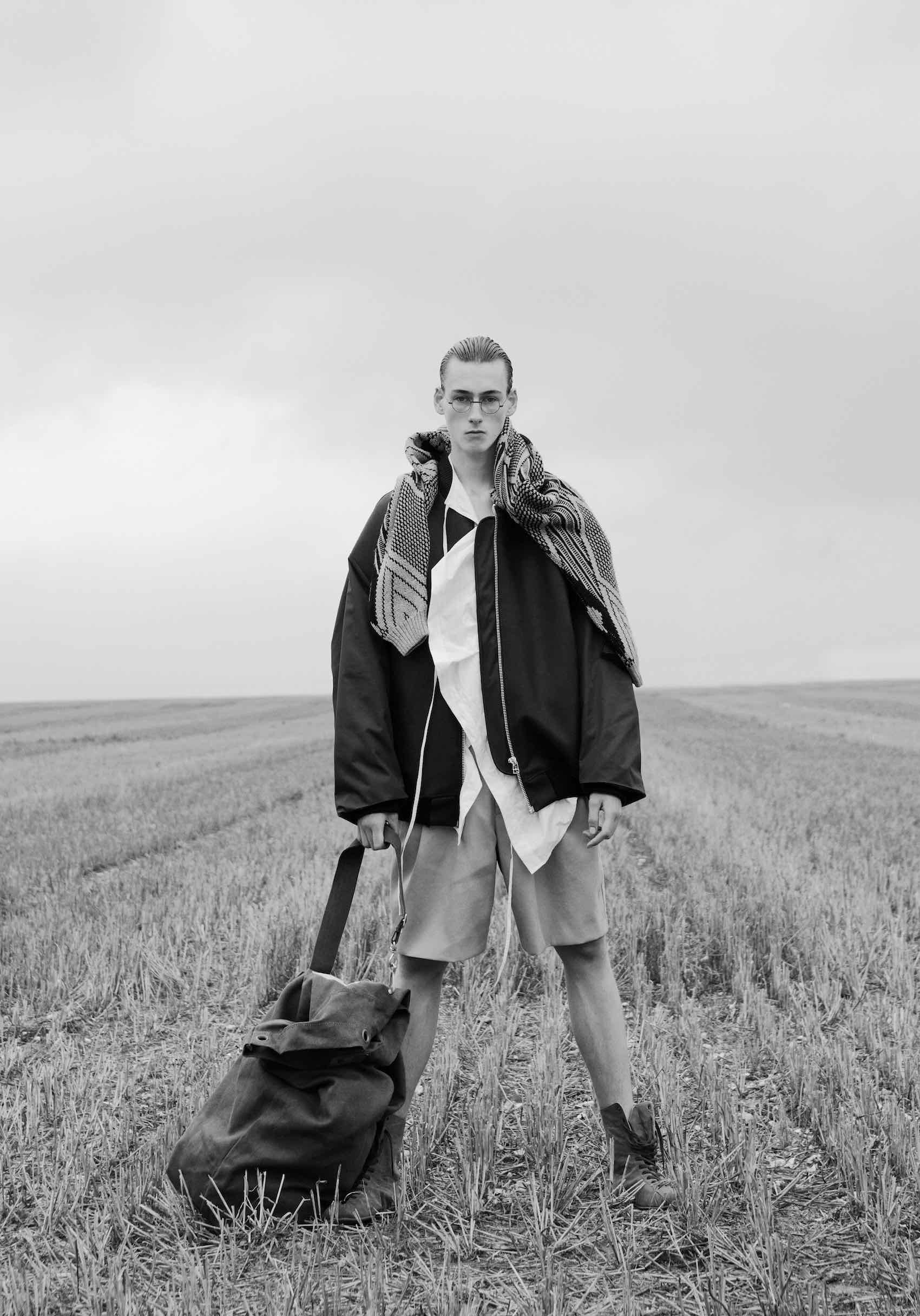
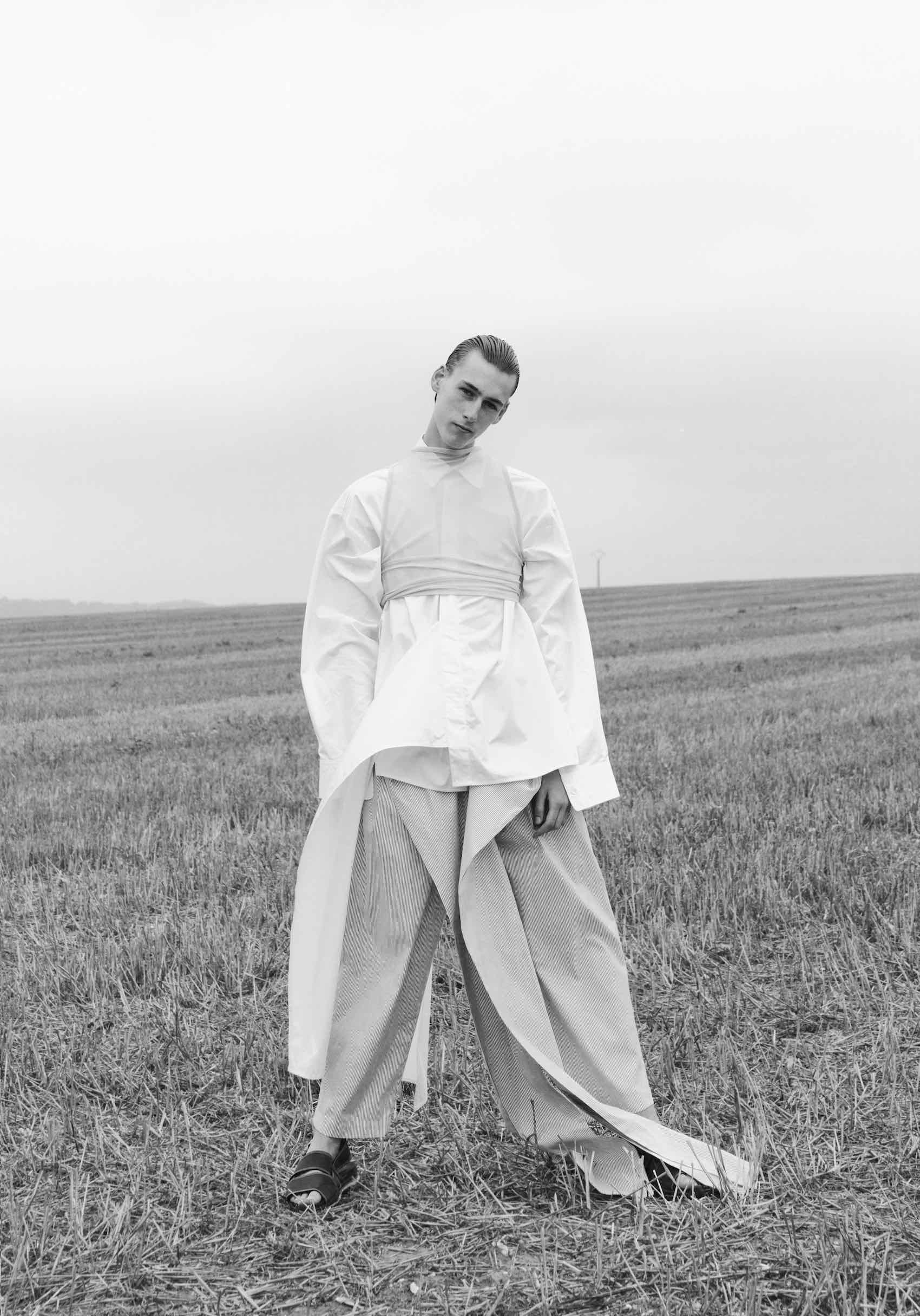
SD: Bulletproof. But it’s also supposed to be not a fashion piece but something economically lasting. You know what I mean?
HM: Yes.
SD: You always say that people in Israel don’t give a shit about clothes and they make everything in order to not have to think about it. Which is also right for the clothes we are talking about.
HM: It’s an object. It’s not like clothes. It’s an object on your hanger, in your house. Israel in general is an emerging society. Many new things happen and it’s kind of very progressive, but when you look at the history, all of the progressive societies have a very informed fashion scene. But that’s not happened here. People don’t think there is an importance to being well dressed here, and that’s what makes people like this city. You walk on the street and even if you don’t have money, you feel OK. And that’s what’s so nice about living here. This feeling is so hard to replace—even if I could see myself maybe living in Paris, it would be so hard to give up on living in this type of atmosphere. So it was also thinking about clothes that have no status. In a way they are an antithèse for fashion because they don’t evolve. It’s just the same, the same all the time.
SD: I remember there was the tallit, which I was always obsessed with. It’s like a T-shirt but actually just a square, just a T-shirt without sleeves. The first time we started working together, I was like, “Oh, that’s super wonderful, so minimal and it’s great. Let’s use it.” And you were cracking up because it was like touching something very sacred and importing it to a context, which is fashion. I remember your eyes—you were like, “What are you doing? Are we going to touch that? It’s kind of forbidden.” I was like, “Can we do it in another color? Can we change the stripe?” And you were like, “Just wait a minute.”
HM: I had to try to see it from an outside view, and this is something hard and it was very helpful. During our last visit, we kind of said, “Ah, yes, we don’t need the mood board, everything around us is the mood board. And we don’t need to collect images, which is great because it takes so much time.” When you walk around, you can just pick up on so many things. There are these very destroyed areas where there is nothing, and it’s this idea of creating something out of this nothing.
SD: Also there is this multiethnic aspect in Tel Aviv, which brings a lot of types of clothes. You can see sneakers combined with something African and then a bomber jacket. But also there is this religion thing where you see a lot of people wearing religious clothes and this contrast, this mix of things that are like related to rules. This kind of clash of things—it’s very interesting. I’m not surprised that people compare sometimes Tel Aviv with New York in the ‘70s, or something like that.
HM: There is this innocence, but there is also this side in the collection—when I go to Paris and see these books in your office and all of this heritage and long history, the history of the capital of fashion and all the strength and knowledge it’s holding, not just in terms of creativity, but also this system of fashion, how it works—there is this aspect of…it’s like an aware idea of cultivated and uncultivated. It’s very interesting because today, society is so saturated with information and images and everything, so this idea of being uncultivated, without the knowledge, is so pure, so fresh.
SD: What do you mean?
HM: Everybody is so aware of everything, how they look, so this idea of creating something that is naive or uncultivated to oppose this is really appealing to me. Tell me, from the first session we had in Tel Aviv to the last, how was your experience compared to the first one?
SD: When we started, there was absolutely no audience. There was just us, and so it was just trying to make your idea and my idea connect somehow in building this first collection. But then the last one, which was your show in June, was different because now we know that there is an audience for your clothes and there is a buyer. There is the possibility to create an economy around it. Then when I did this photo shoot, I was really surprised by the wearability of your clothes and the complete playfulness. You can really experiment with them more. And I quite like that. I was dressing this man with this boy, and the sizes are blurred somehow—it’s not really oversized, it’s not your size, it’s somewhere in between. There are classic pieces and at the same time, you have this feeling of opened possibility that you cannot find in a very classic coat, in a very classic shirt, in a very classic pant. You tie, you untie, you button, you move back. There is a slit in the back, you move forward. And that’s what I like in your clothes: there was this feeling of mobility.
HM: These pieces, they look familiar and unfamiliar at the same time. On the rack, it looks familiar, and then you hold it and it looks different. You can wear it like this and like that, and it’s like playing with something very realistic yet abstract at the same time.
SD: That’s also the reason why women are attracted to your clothes. It’s kind of blurred. It doesn’t say, “You are a woman wearing men’s clothes,” it’s not a man wearing menswear. But the fabrics are super menswear—you don’t do floral or things like that. I get the feeling that because of that, you can manipulate them in many ways. You don’t have the feeling that you have to start from scratch every season and do something completely new because it’s not the point. I remember when we met the first time, you were speaking about your father who was molding things, and you were talking about creating shapes by molding and I was like, What the hell is he talking about? That has nothing to do with clothes. You were talking about this idea of—what was it actually?
HM: I worked with a furniture designer from this academy in Jerusalem before I was a student, and that’s kind of what led me to start studying. I worked for him because I had sewing skills. In the furniture shop, they mold everything. You have the furniture, then you wrap it and stretch the leather and everything is tight. It gives you this sculpture. When I started designing clothes for my graduate collection, it was this kind of sculpture that I did the pattern on top.
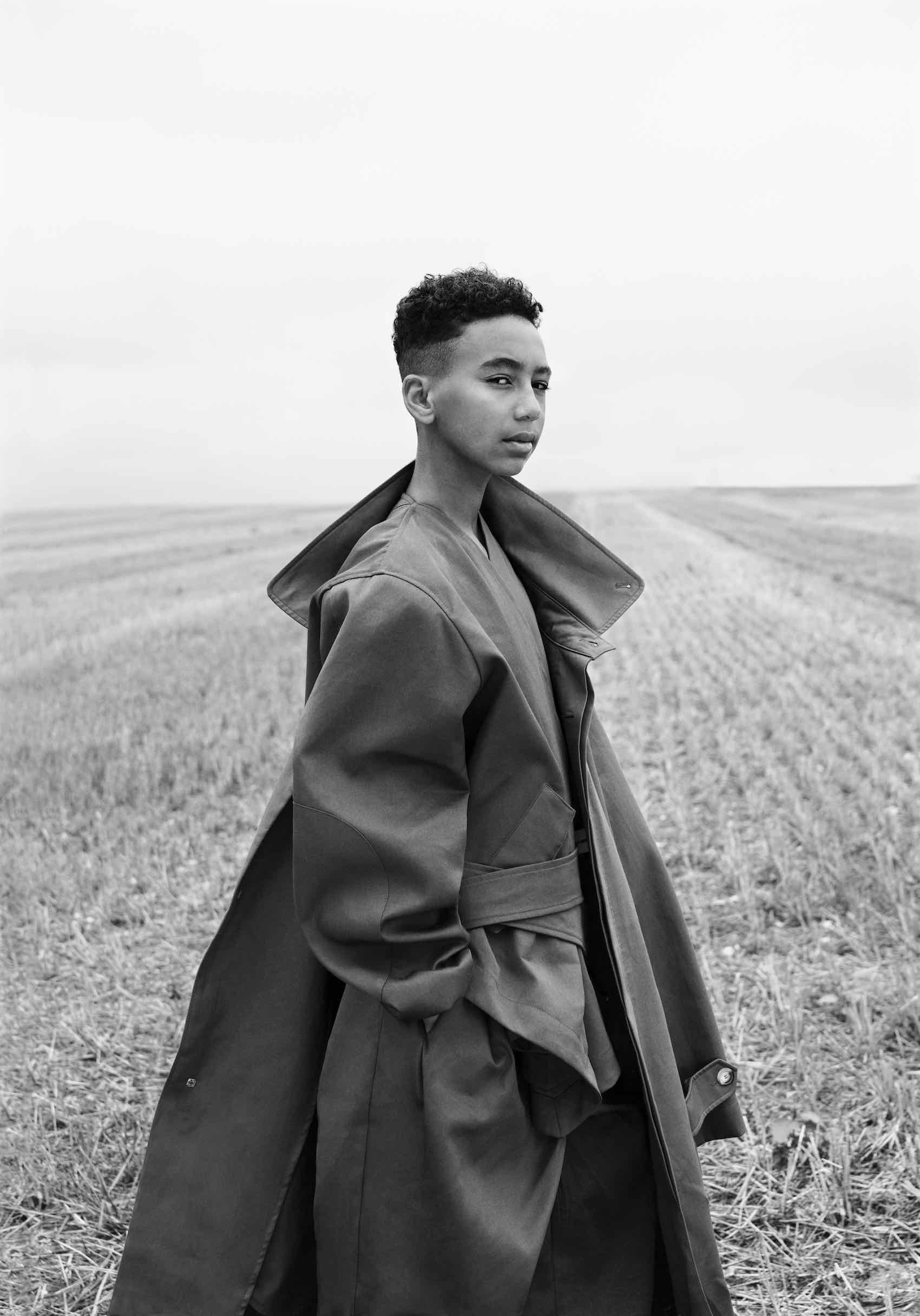
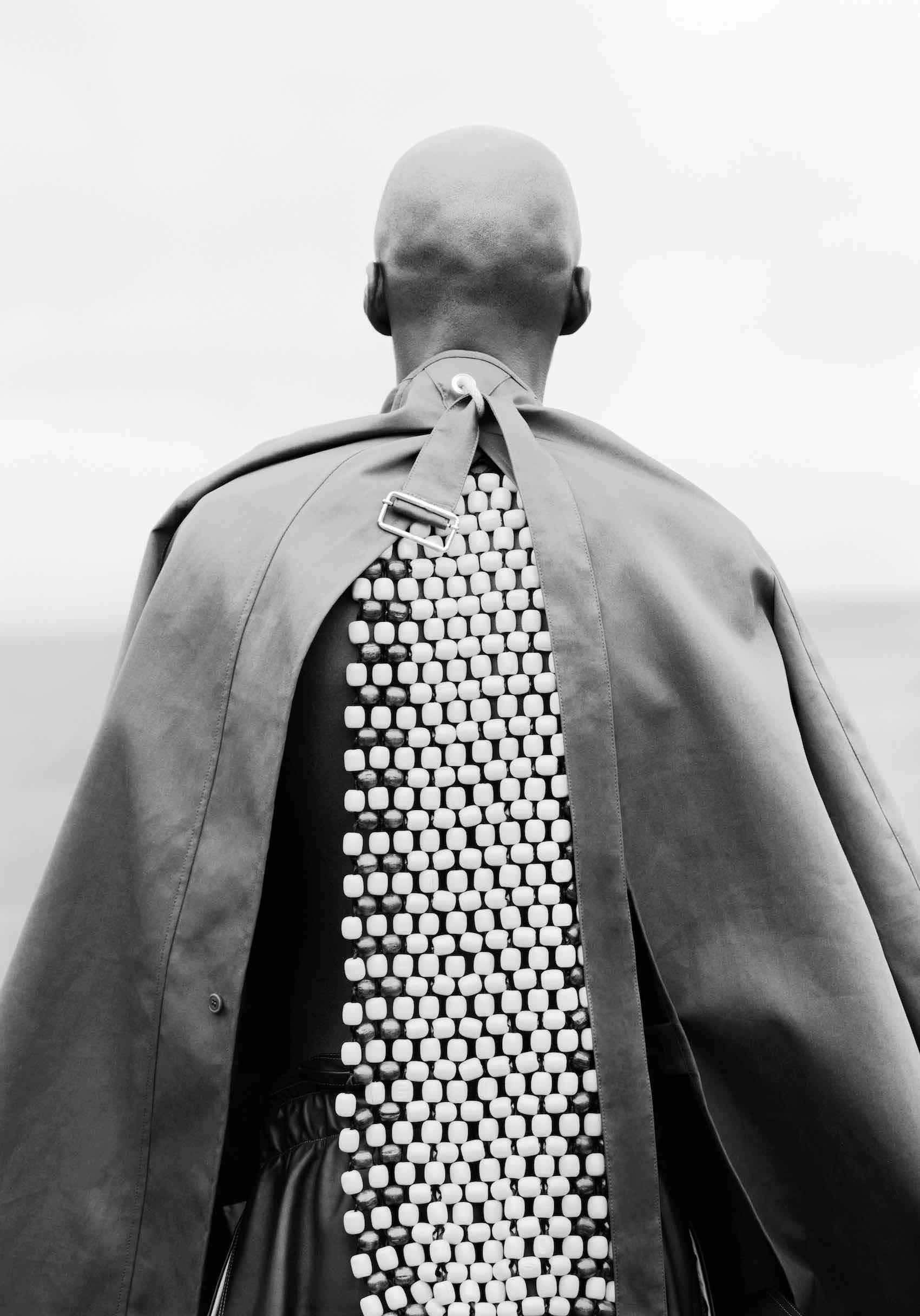
SD: There is still a sculptural dimension to your clothes. Just a trench coat, for example, when you wear it for the first time, you feel like you’re wearing something.
HM: It’s classic but it’s become an object. It gives you this kind of silhouette that is more structural. I mean, you look different in the end.
SD: You are always fascinated by the Japanese, the way they approach your collection, and they are so, as you say, aware of things that you didn’t even think about.
HM: Yeah. It’s not like I was aiming for Japanese, but I think they were the first to pick up the collection. They do it so well. I got to know a bit about their culture and I developed a relationship with them, and I admire them. I think they see the shapes so clearly. They understand it so clearly.
SD: You understand why they like it?
HM: Now I understand more. I’ve still never been to Japan so I’m not familiar, but I think that…it’s tough for me to explain. I think they see a living thing in everything, even a button is a living thing and the coat is a living thing. Everything has this human aspect, even though it’s an object. It’s quite crazy. It’s even frightening, if you think about it.
SD: When we did the first story of you [for Encens], we had this title “Living Shapes.” You have clothes that are from the first season, and then they turn into something else over the years because the fabric gets older and it gets softer—like furniture, as you say, because it’s not related to fashion. When you work with a designer, they really want to know what their position is according to the trends, and you don’t give a shit about that.
HM: I don’t think we’re aiming to guess what will happen next season. It’s not part of the plan.
SD: We were talking about Jewish clothes in the beginning but there was also, in contradiction, the military side, which is very connected to your aesthetic.
HM: With uniform in general. For example, people will never buy anything in khaki in Israel because they wear it for three years in the army and afterward, they cannot even look at this color. I was not in the army so I can live with this color, but if I had been in the army, I could never use it.
SD: I mean, it’s such a long military service. Three years and you get completely disgusted by it. I remember going to the Tel Aviv airport wearing your clothes actually: khaki and this kind of beige, which is very military too. People were staring at me as if I was—it obviously looked like I wasn’t in army clothes, but still the color was a sign.
HM: I was so surprised so many times, you came in with all your experience working in huge fashion houses. I was so amazed with you, we worked sometimes with conditions that were so hard and you are focused on the purpose and not everything around it, with such fresh energy.
SD: I’m very romantic, Hed. When I believe in a story, when I believe in something, no matter if it’s a big company, a small company, a non-existent company, I will put my energy in it. With you I felt that’s what you are. Talking at the beginning, we were analyzing each other, scrutinizing each other trying to see if it could be a marriage.
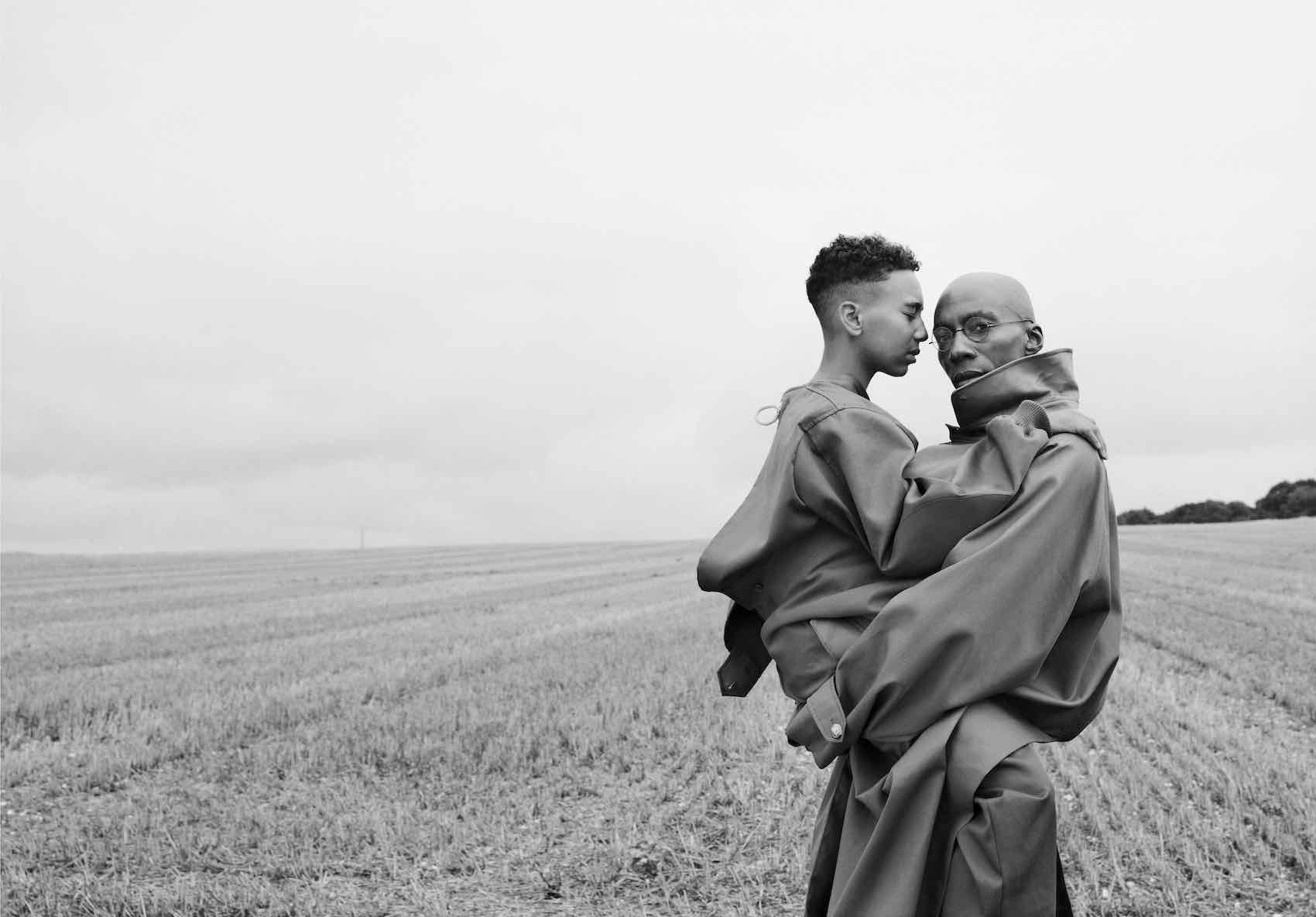
HM: And still, we are still there. With fashion it’s so much related to your life, the way you evolve, the collection evolves and your relationships with people, it affects everything. Everyone in the studio, everyone you speak with has this impact on the final result and that’s what’s great about it. It’s not something that you create that’s completely separate.
SD: It’s a teamwork. You have to make sacrifices, and actually, you have two beautiful kids.
HM: I think they are also a part of it. It’s a very intensive thing, to have both of them born within one year, so I construct them together with the collection. The collection is a separate baby.
All Looks: Hed Mayner
